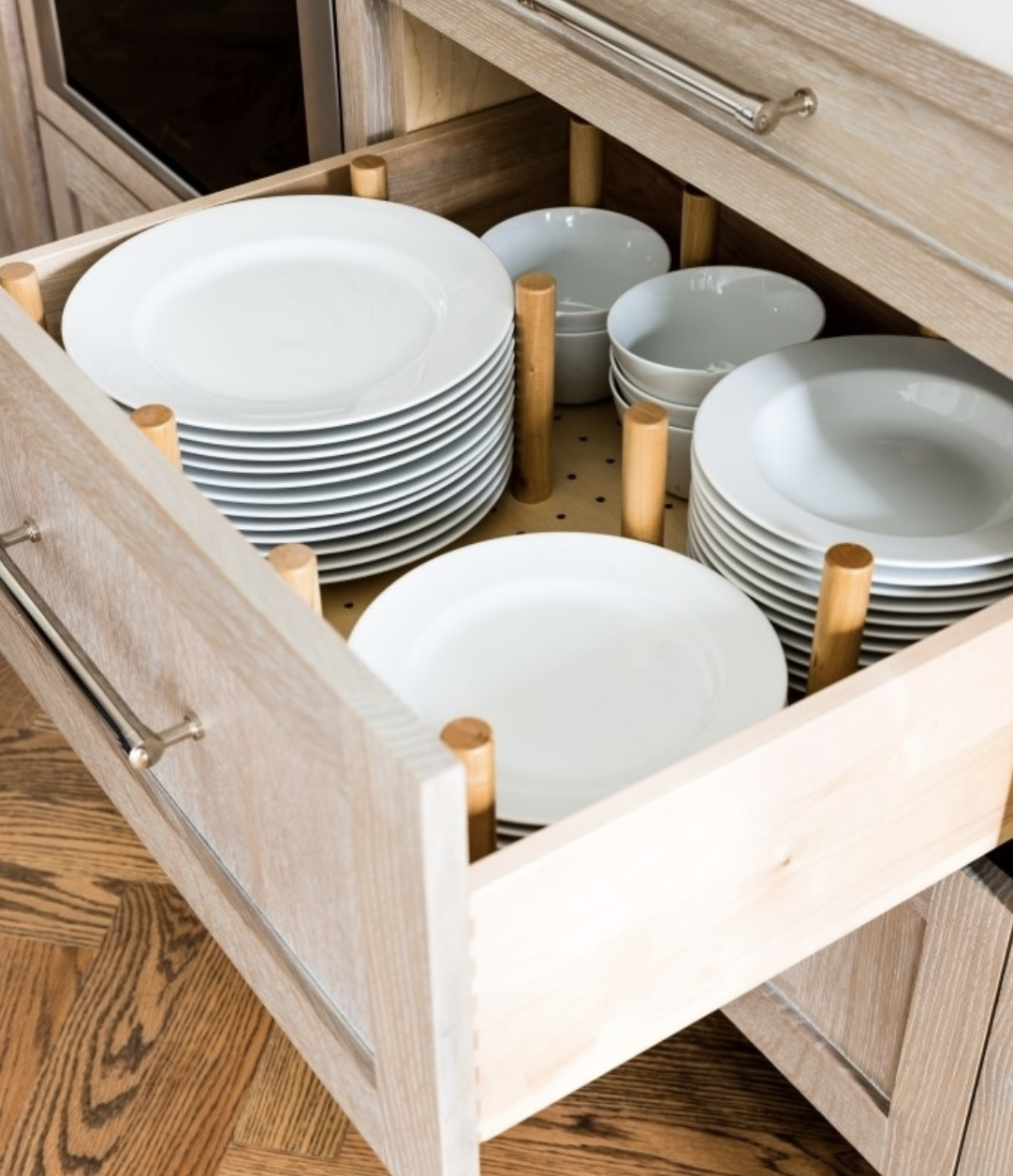Sometimes it feels like when homes were designed, one of the things that tends to get overlooked is kitchen storage. There never seems to be a rhyme or reason for how to store things like pots, tools and utensils, food storage containers and dishes. You’re left with stacking with a bunch of empty space that doesn’t have any use, or sometimes cabinets go so far back that some items simply get forgotten about because they’re out of reach. If you’re searching for answers on how to better organize items like your dishes, check out these helpful tips.
Common Dish Storage Mistakes
Sometimes you just have no choice. But if you’ve been a victim of at least one of these, you’re not alone.
The Overcrowd
If your cabinet feels like you need to wear a hard hat every time you go to grab a plate, you might be guilty of overcrowding. Grabbing a snack shouldn’t feel like an adrenaline-inducing side quest. A moment of silence for all the dishes lost as a result of overcrowding your cabinets.
The Stacking Method
When there’s not enough cabinet space, the next instinct is to go vertical, stacking plate by plate and just hoping for the best. This can get heavy, especially on the lower dishes, making them subject to chips and cracks if you stack one too many.
Neglecting to Separate Fragile Items
Another mistake is storing fragile items, such as glassware or delicate dishes, alongside heavier items. This increases the risk of breakage and damage.
Storing Items with Food Residue
Leaving food residue on cookware before storing it can lead to unpleasant odors and mold growth and can be abrasive on dish surfaces if crusted on for too long. Always make sure to clean pots, pans, and other cookware thoroughly before putting them away.
A Guide To Proper Storage
If space just isn’t on your side, the key to storing your dishes lies in the accessories. They’re often simple and small, yet make such a world of a difference you wonder how you didn’t think of it yourself first.
1. Maximize cabinet space with stackable organizers.
Use every inch of your cabinet space by investing in stackable organizers. These helpful tools help you create multiple layers, allowing you to store plates, bowls, and serving dishes without crowding. Look for adjustable organizers to accommodate different sizes and shapes of dinnerware, so you get a tailored fit for your kitchen cabinets.
2. Use drawer dividers for neat utensil storage.
If you have a chaotic drawer where spatulas, mixing spoons, tongs and measuring cups are always in a jumbled mess, there’s hope yet with drawer dividers. Sort these items into designated compartments, keeping them easily accessible whenever you need them.
3. Preserve cookware with protective liners.
Extend the lifespan of your pots and pans by lining your cabinets with protective materials. Avoid scratches and dings by placing non-slip liners or soft fabric between stacked cookware. Additionally, consider using pan protectors between nested pots and pans to prevent scratches and maintain their pristine condition.
4. Optimize vertical storage for bakeware.
In this case, going vertical is the point! Make the most of vertical space by storing bakeware vertically. Stand baking sheets, cutting boards, and muffin tins upright to maximize cabinet space and minimize clutter. This vertical storage method not only saves space but also makes it easier to grab the item you need without disrupting the rest of your kitchen essentials.
5. Label and stack Tupperware for easy access.
Keep your storage container collection organized by labeling each one and its corresponding lid. Stack similar-sized containers together to save space and maintain a tidy appearance.
6. Use overhead racks for hanging pots and pans.
Free up cabinet space in your kitchen by installing overhead racks for hanging pots and pans. It adds a rustic look by showcasing your cookware collection and keeps it within arm’s reach for easy access during meal prep. If this is for you, make sure to choose sturdy racks with adjustable hooks to accommodate different cookware sizes and weights.
